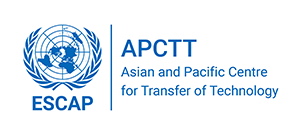Cheaper Way to Produce Dye-sensitive Solar Cells
Prices of solar cells throughout the world have skyrocketed due to a shortage of silicon chips used in the batteries. As a result, people are becoming more and more bullish about the prospects for dye sensitized solar cells, which rely on glass as a primary raw material. Researchers at National Tsing Hua University, China has recently developed an even more cost saving method to produce dye sensitized solar cells. Using this method, the production costs will be reduced by at least half. Meanwhile, it is presumed that that the production costs used to produce the dye sensitized solar cells employing this method will be at least 10 times cheaper than to produce silicon solar cells. . In addition, this is likely to pave the way to a new age of applications using solar cells. Presently, costs associated with producing solar power are still 10 times greater than with other sources, such as fossil fuels. As a result, solar power still to this date has yet to become widely used. The dye sensitized solar cells were first invented in the early 1990s. While they have been in existence for over a decade, production costs to produce the cells have simply been too high. In addition, the conversion level of light to electricity has yet to reach an efficient rate. As a result, the dye sensitized solar cells have continuously faced obstacles in trying to replace silicon power cells. In the past, in an effort to reduce power resistance, a nanometer platinum powder was introduced in the production process for electrodes in dye sensitized power cells were. It used to be that the platinum power was affixed onto the electrode grid and then splash plating or thermal denaturalization was employed. This process needed to be carried out using a vacuum or a high temperature environment. However, the machinery employed to carry out the vacuum process and to heat the environment to over 100 degrees Celsius was extremely expensive. According to the method developed by National Tsing Hua University, the production process can now be carried out at room temperature and no longer requires a vacuum process. In itself, this will be able to cut machinery and hardware costs significantly. The researchers discovered that all one needs to do is add a solution to sodium sulfur organic salt to become a protective agent. After a two-stage immersion procedure, the platinum powder is then stuck to the electrode. This method not only has applications in the solar cell electrodes, but can also be used in the production of fuel cell electronics and electrical circuitry. Further more, this method has the potential to pave the way for mass production of solar cells on a cost effective basis. For more information, contact: Wan ,Chi-Chao Professor Department of Chemical Engineering National Tsing Hua University 101, Section 2, Kuang Fu Road, Taiwan, 300, ROC. Tel: +886-3-5719036 Fax: +886-3-5715408
Sector: Renewable Energy Technologies
Country: India
Area of Application: Photovoltaics
Keywords: Dye sensitive, Solar cells
Advantages: 1. Cost effectiveness
Environmental aspects: Energy efficiency
Development Status: Laboratory Model
Legal Protection:
Technical specifications:
Transfer Terms: Consultancy , Technical Services
Target Countries:
Estimated cost (US$):
Upload any relevant document:
Contact Person: APCTT (UNESCAP)
Address: Asian and Pacific Center for Transfer of Technology (APCTT) C-2, Qutab Instituational Area
City: New Delhi
Country: India
Zip/Pin Code: 110016

